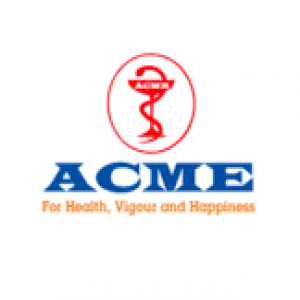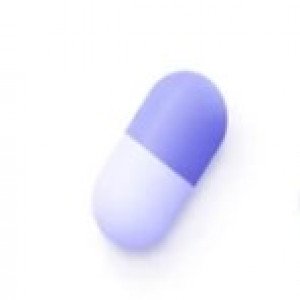 Welcome
Welcome
“May all be happy, may all be healed, may all be at peace and may no one ever suffer."
ACME Laboratories Ltd.

Acelex 500mg

Generic for Diseases
- Periodontitis (Pyrrhoea)
- Gum Boil
- Cholecystitis
- Hemorrhoids (Piles)
- Gallstones
- Bronchiolitis
- Cor Pulmonale
- Bronchitis
- Asthma
- Pneumonia
- Mitral valve stenosis
- Pericarditis
- Influenza (flu)
- Measles
- Filaria
- Erysipelas
- Boils (Absces or Carbuncles)
- Syphilis
- Nasal polyps
- Laryngitis
- Tonsillitis
- Lupus nephritis
- Pyelitis
- Cystitis
- Uterine Inflammation (Cervicitis)
- Salpingitis
- Miscarriage (Abortion)
- Preeclampsia
- Menorrhagia (Heavy menstrual bleeding)
- Burns
- Bacterial endocarditis
- Boils
- Cellulitis
- Erysipelas
- Folliculitis
- Furuncles
- Furunculosis
- Genitourinary tract infections
- Gram-positive infection
- Group A Strep. infections
- Mastitis
- Nail infections
- Otitis media
- Pharyngitis
- Phlebitis and extravasation secondary to venous cannulation
- Pneumonia
- Prostatitis
- Respiratory tract infections
- Severe or recurrent resp tract infections
- Streptococcal pharyngitis
- Streptococcal pharyngitis/tonsillitis
- Streptococcus Septicaemia
- UTI
- Urinary tract infection
Cephalexin is a semisynthetic analogue of Cephalosporin C. It kills bacteria by interfering in the synthesis of the bacterial cell wall. Peptidoglycan is a heteropolymeric structure that provides the cell wall with mechanical stability. The final stage in the synthesis of peptidoglycan involves the completion of the cross-linking and the terminal glycine residue of the Pentaglycine Bridge is linked to the fourth residue of the pentapeptide (d-alanin). The transpeptidase enzyme that performs this step is inhibited by penicillins and cephalosporins. As a result the bacterial cell wall is weakened, the cell swells and then ruptures. Cephalexin is a first generation cephalosporin that is active by mouth.
Cephalexin is indicated for the treatment of the following infections when caused by susceptible organisms.
- Respiratory tract infections: Acute and chronic bronchitis and infected bronchiectasis.
- Genito-urinary tract infections: Acute and chronic nephritis, cystitis, urethritis and prostatitis, prophylaxis of recurrent urinary tract infections.
- Skin and soft tissue infections: Caused by staphylococci and/or streptococci.
- Ear, Nose and Throat infections: Otitis media, mastoiditis, sinusitis, follicular tonsillitis and pharyngitis.
- Bone infections: Caused by staphylococci and/or P. mirabilis.
Adult:
- The usual dose is 250 mg to 500 mg every 6 hour.
- For skin and soft tissue infections, streptococcal pharyngitis and uncomplicated cystitis, in patients over 15 years of age: 500 mg of the drug may be administered every 12 hour.
- In severe or deep seated infections the dose can be increased up to 3 g to 6 g daily.
Children: The dosage range is 25-100 mg/kg/day in divided doses to a maximum of 4 g daily
Children's Weight Recommended Dose:
- 10 kg (22 Ibs): 62.5 mg to 125 mg qid or 125 mg to 250 mg bid
- 20 kg (44 Ibs): 125 mg to 250 mg qid or 250 mg to 500 mg bid
- 40 kg (88 Ibs): 250 mg to 500 mg qid or 500 mg to 1 g bid
For streptococcal pharyngitis, skin and soft tissue infections and in patients over 1 year of age the total daily dose may be divided and administered every 12 hour. In the therapy of otitis media 75-100 mg/kg/day in four divided doses may be required. In the treatment of β haemolytic streptococcal infections a therapeutic dosage of the drug should be given at least for 10 days.
Cephalen is contraindicated in patients with known hypersensitivity to the cephalosporin group of antibiotics.
Side effects include nausea, vomiting, diarrhoea and abdominal discomfort. Symptoms of pseudomembranous colitis may appear either during or after antibiotic treatment. Skin rash, angio oedema, rise in serum aminotransferases, eosinophilia, neutropenia have been reported very rarely. Superinfection with resistant micro organisms, particularly candida may follow the treatment.
Cefalexin should be given with caution in patients with renal impairment. Under such condition, careful clinical observation should be made because safe dosage may be lower than the usually recommended. The urine of patients receiving Cefalexin may give a false positive reaction for glucose with copper reduction reagent. Positive results to Coombs’ test have been reported. Although there is no evidence of teratogenicity in animal tests, Cefalexin may be used during pregnancy when it is considered essential. Cefalexin is found in the milk of nursing mothers, hence caution should be taken when it is administered to nursing mothers.
Pregnancy & Lactation
Pregnancy Category B. Cefalexin may be used during pregnancy when it is considered essential. Cefalexin is found in the milk of nursing mothers, hence caution should be taken when it is administered to nursing mothers.
Acelex 500mg and more Available Brands
V-Plex Plus
Oxecone (250mg + 4...
Z-Plex
Uropass-D 0.4mg + 0....
Famodin 40mg
Pidus 15mg
Bilan 20mg
Fast 125mg
...
To be happy, beautiful, healthy, wealthy, hale and long-lived stay with DM3S.